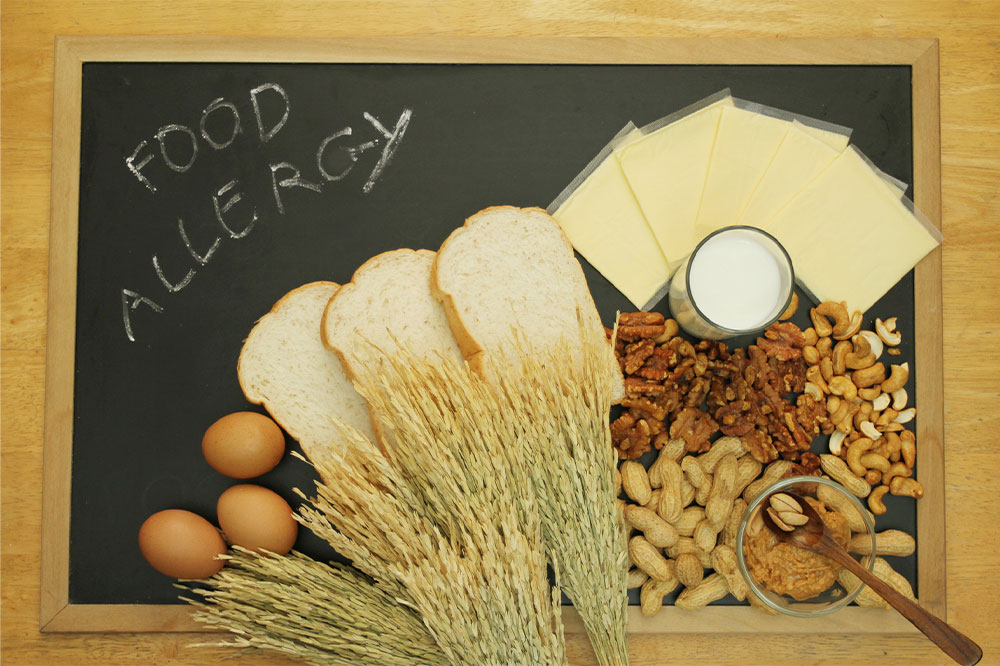
Food allergies – Their triggers and relief options
A food allergy is when the immune system mistakes a harmless food item for something that could make you sick. In such cases, your body responds harshly to protect you. Common allergic food reactions include skin rash, itchy eyes, or swollen throat, which could leave you gasping for air. Hence, it is important to know what triggers allergies. We have listed some common allergies and foods to alleviate allergy symptoms.
Common food allergies
Peanuts
One of the most common allergic foods is peanuts, which can sometimes lead to life-threatening reactions. The exact reason why people develop peanut allergies is not known, but those with a family history of this type of allergy are considered at risk. Peanut allergy is diagnosed by combining patient history, skin pricking tests, blood tests, and food challenges. About 15% to 22% of children who develop peanut allergies find it resolves once they become teenagers.
Tree nuts
People with nut allergies are commonly advised to avoid all types of tree nuts because they are at the risk of developing a food allergy to all other nuts. Some examples of tree nuts are Brazil nuts, almonds, cashews, macadamia nuts, pistachios, hazelnuts, pine nuts, and walnuts. Tree nut allergies are responsible for about 50% of anaphylaxis-related deaths. Hence, people with this kind of allergy should carry an EpiPen at all times.
Eggs
Eggs are the second most common food allergy in children, but more than half outgrow this allergy after turning 16. Symptoms of egg food allergies include stomach aches, skin rash or hives, respiratory problems, and anaphylaxis (rare). Heating eggs can change the shape of allergy-causing proteins, so you may not have to eliminate all egg-related foods.
Cow’s milk
Allergy to cow’s milk is commonly seen in babies and children. This kind of reaction can occur in both IgE and non-IgE forms. In adults or children with IgE, reactions occur within 5 to 30 minutes. Symptoms include swelling, rashes, hives, and vomiting. Those with non-IgE experience gut-based symptoms like constipation, vomiting, diarrhea, and inflammation of the gut wall.
Shellfish
This allergy happens when the immune system attacks proteins from crustacean and mollusk families of fish, commonly called shellfish. Shrimp, prawns, crayfish, lobster, squid, and scallops are some examples of shellfish. Tropomyosin, arginine kinase, and myosin light chain proteins in seafood may also trigger a food allergy reaction.
Foods that may ease allergic symptoms
Ginger
Food allergies can cause inflammation and irritation in the nose, eyes, and throat. Ginger is known to alleviate allergic symptoms and reduce them naturally. It is a rich source of antioxidative and anti-inflammatory phytochemical compounds that can also be used to treat nausea and joint pain. There is no proven anti-inflammatory property difference in fresh or dried ginger.
Bee pollen
Traditionally, bee pollen is often sold as a treatment for pollen allergy. This is a mixture of ingredients like enzymes, honey, flower pollen, and a little wax. It is known to contain anti-inflammatory, anti-fungal, and antimicrobial properties. According to some studies, bee pollen builds the body’s immune system so that it has the power to resist pollen. If possible, consume bee pollen from a farmer’s market, as they are more likely to be ethically sourced. You can also sprinkle bee pollen on cereal or mix it with smoothies.
Fatty fish
If you have a peanut allergy, eating a healthy amount of fish like mackerel, salmon, sardines, or tuna may ease allergic symptoms. Fatty fish contain two types of omega-3 fatty acids called docosahexaenoic acid (DHA) and eicosapentaenoic acid (EPA) that decrease the reaction to allergies. However, one must not go overboard, as fish contain mercury. Avoid eating canned fish and instead, look for fish that is wild and not farmed.
Citrus fruits
Like omega-3, vitamin C is known to help ease symptoms of allergies. Vitamin C reduces the longevity of the common cold and prevents irritation in the upper respiratory tract. Instead of taking vitamin C supplements, you can have vitamin C-rich foods like oranges, red peppers, strawberries, grapefruit, lemons, limes, and berries. Fruits and vegetables that contain quercetin like broccoli may also be beneficial.
Yogurt
Yogurt is a probiotic which is proven to have effects against anti-inflammatory and anti-allergic conditions. It works by reducing the body’s immune response to an allergic reaction. If you feel yogurt causes allergic reactions, try the elimination challenge. Do not eat dairy or yogurt for two weeks and check how you feel. Then start by adding a little bit of yogurt to your meals and compare the results.
Onion
Onions contain bioflavonoids that act like mast-cell stabilizers in bringing down allergic reactions. They reduce the number of cells that react to the allergen. Quercetin, a type of bioflavonoid, is very powerful in controlling inflammation and easing allergic symptoms. Other foods that contain quercetin are apples, tea, and red wine.




